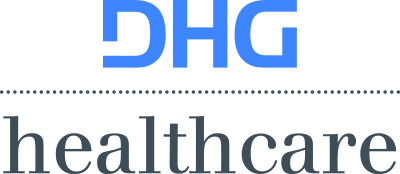How to Succeed in the BPCI-A Program: Transforming Care Across the Continuum

In this article, Gina Anderson, RN, BSN, MPPM, manager at DHG Healthcare discusses how optimizing care management can improve performance with BPCI-A initiatives. DHG Healthcare is a sponsor of HFMA’s Value-Based Healthcare Innovation Council (VBHIC). This topic was discussed at the group’s most recent meeting in Columbia, Maryland on September 10-11, 2019.
More than 2,000 participants nationwide began, Jan. 1, 2020, initiating episodes of care in the Bundled Payments for Care Innovation Advanced (BPCI-A) program for the new model year. BPCI-A is an Advanced Alternate Payment Model (APM) in which healthcare providers agree to receive a single payment for physician, hospital and other healthcare services for specific diagnoses within an episode of care. An episode of care is defined as an anchor stay and 90 days following the anchor stay. During this time, the healthcare provider is financially accountable for the bundle.
The CMS Innovation Center created the BPCI-A model to encourage development of innovative solutions for care redesign, care coordination and practice transformation, with the intent of realizing higher-quality, lower- cost care. The BPCI-A program is the largest voluntary bundled payment program in the country and has helped hospitals and health systems make meaningful progress towards value-based care.
Moving beyond the basics
BPCI-A is in its third model year and thus providers are starting to become familiar with the basics of the program. During this time, data analytics have evolved to become quite sophisticated in identifying where the greatest opportunities are to proactively manage patient health and reduce risk. Assessment of historical claims data is important in understanding opportunity within each bundle and comparing historical payments to target payments. It further allows for claims analysis for a clear picture of patients’ individual pathways and identifies key focus areas in the care continuum. However, what the data can’t tell organizations is how to seize these opportunities. The answers to this challenge can be found in a comprehensive care management strategy that spans the continuum of care for the most vulnerable, at-risk populations.
Unfortunately, developing a comprehensive care management strategy is often easier said than done. Although providers have had some form of care management in the acute care setting for years, their approaches to this function vary by provider. For example, one acute care setting might have its care managers spearheading tasks like patient engagement, discharge planning, resource utilization management and denials management. However, a different acute care facility may assign each one of these functions to different individuals and yet another may combine some functions but keep others separate. When establishing care management processes for BPCI-A patients, the effort can be even more complex because it must span the care continuum, involving different players who are providing care in diverse organizations.
To overcome these challenges and create a successful care management program, there are some fundamental elements that must be in place.
Identify patients early. The first element involves the identification of the BPCI-A patient. The moment a BPCI-A eligible patient is admitted to the inpatient or outpatient setting the provider becomes responsible for the outcomes and expenditures associated with the care episode. The earlier the patient is identified as a BPCI-A patient, the sooner care management and cost containment can begin. The most effective identification method involves assigning a working diagnosis as early in the anchor stay as possible and communicating that diagnosis to key stakeholders.
Risk stratify the patient. Once the patient has been identified, the second key element entails stratifying the BPCI-A patient’s risk. This allows for the appropriate use of resources depending on the patient’s likelihood of experiencing an adverse event. Many evidence-based tools can be leveraged to perform risk stratification, although most electronic health record (EHR) platforms have already embedded this technology into their systems.
Implement care management across the care continuum. The third element requires the healthcare provider to not only manage the patient while in the hospital, but also to actively influence patient care outside the facility’s four walls. A strong BPCI-A care management program follows the patient’s movements in and out of each level of care, such as from the hospital to a skilled nursing facility to the patient’s home. If the patient deviates from the expected path or his or her risk level changes, the organization can then intervene. Using discharge destination tools to predict the appropriate next level of care; defining care continuum pathways and deploying care navigators are examples of ways providers can influence patient care in areas that historically have not been managed by one provider across the continuum.
Collaborate with post-acute care (PAC) providers. Organizations that participate in the BPCI-A program have a range of options in collaborating with PAC providers. Informal methods include engaging in conversations with and providing education to PAC providers that receive a high volume of BPCI-A patients. Creating a preferred provider network is also a strategy, and a more sophisticated method would be establishing a clinically integrated network. Regardless of the approach, collaborating with PAC providers fosters shared patient management across the care continuum and allows for better alignment. It also enhances acute care providers’ ability to understand the language of PAC providers and be successful in risk-based APMs without being compelled to own a PAC provider.a
Engage patients and families. Engaging patients, families and caregivers in the plan of care informs them about the patient’s condition, allows them to take an active part in the care plan, and takes the patient’s values and preferences into consideration, which leads to better outcomes.
Embrace an interdisciplinary team approach. A diverse team of care providers can offer valuable perspectives in managing the care for BPCI-A patients. Since each patient, due to various reasons, is at high-risk for an adverse event, it is critical to use interdisciplinary teams because they allow for rapid solution development for complex problems. Members of this team, for instance, may include the following people:
- Attending physician who sees the patient when the episode begins
- Pharmacist who ensures the patient understands directions for taking medications
- Care navigator in the patient’s home
- Emergency room physician who cares for the patient during the 90-day post-anchor stay
Effective communication is the critical success factor among disciplines and care settings.
Continuously measure and evaluate data. As stated earlier, data analytics has played a key role in moving the needle on BPCI-A performance. This function will be instrumental in effective care management as well. Looking beyond just historical claims data and utilizing continuous measurement and evaluation of the current data surrounding the management of BPCI-A patients allows for a fail- quickly, change-quickly philosophy and ensures care management optimization will be reached sooner rather than later. It is also critical for healthcare providers to have the appropriate structure in place to communicate performance from executive stakeholders to the front-line clinical staff who will be engaging with the patient in the continuum. The added value of cascading the message to all key stakeholders on a regular basis pays dividends in establishing accountability for those in roles that will influence program effectiveness daily.
A commitment to care coordination should be a top priority
Healthcare providers’ success with the BPCI-A program will ultimately depend on their ability to implement the previously outlined elements and integrate BPCI-A care management into current care management efforts, such as programs aimed at reducing readmissions. By building a care management strategy with the end goal of sustainability and scalability, organizations can realize greater performance across all care management efforts, furthering their progress toward value-based care.
About DHG Healthcare
DHG Healthcare, the national healthcare practice of Dixon Hughes Goodman LLP, is ranked by Modern Healthcare as the tenth largest, privately held consulting practice in the nation. Spanning the broader healthcare ecosystem, our clients share the common challenge of successfully navigating the unparalleled amount of federal, state, and market-driven reform underway in the U.S. Our services in the consulting, assurance, and tax domains are purposefully designed to assist our clients in their journey to risk capability. Learn more about the services and people of DHG Healthcare at dhg.com/healthcare.
Footnotes
a. For more information on how to develop a high-value PAC network, review the following articles: Mulvany, C., “Why PAC discharge choices are key to success under risk-based payments,” hfm, July 1, 2019; Mulvany, C., “3 essentials for creating and managing a high-value PAC Network,” hfm, Aug. 1, 2019.






